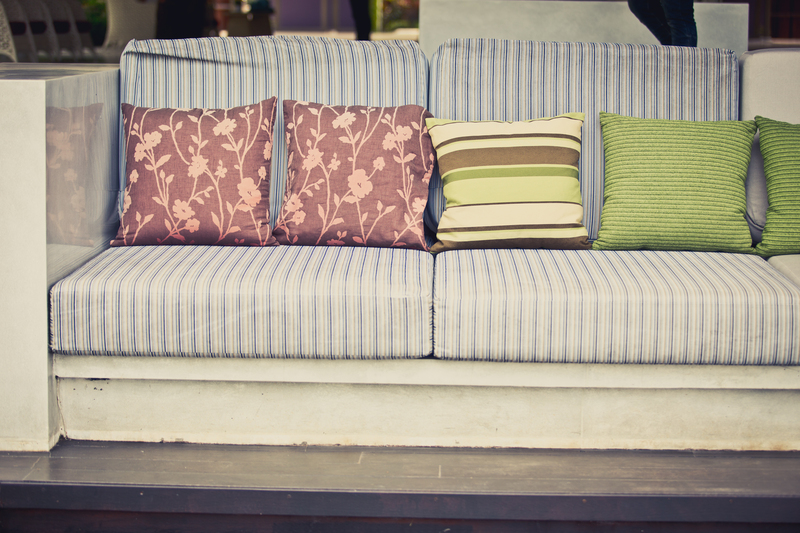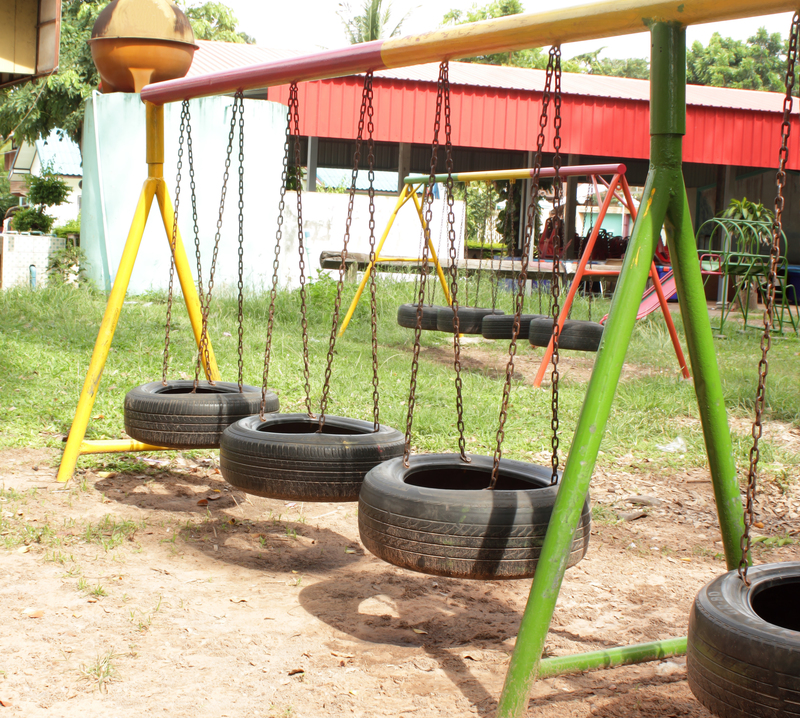Maintain the Momentum: Clutter Control Tips for After a Clear-Out
Congratulations! You've conquered the chaos, tackled that overwhelming mess, and completed a satisfying home declutter. But what happens next? The journey doesn't end with a sparkling clean space. Keeping clutter at bay is an ongoing process that demands attention and consistency.
In this comprehensive guide, you'll discover actionable clutter control strategies to help you maintain the momentum after a clear-out. Learn how to avoid falling back into old habits, foster an environment of order, and keep your space refreshingly organized for the long haul.
Why Maintaining Clutter Control Matters After a Declutter
When you clear out your space, the sense of relief and accomplishment can be profound. However, many people notice that, over time, clutter tends to creep back in. To make decluttering truly effective, you must transform it from a one-off event to an integral part of your lifestyle.
Permanent vs. Temporary Tidiness
- Relapse is common: Without a proactive plan, freshly tidied rooms can revert to their former state within months.
- Long-term benefits: Ongoing clutter control saves time, reduces stress, and boosts productivity.
- Building habits: By developing sustainable organizing practices, you foster a home environment that stays orderly--almost effortlessly.

Top Strategies to Keep Clutter from Creeping Back
Ready to sustain your clutter control success? Implement these tried-and-true tips to uphold your tidiness triumph.
1. Embrace the 'One-In, One-Out' Rule
This simple yet powerful principle lies at the heart of long-term clutter management. For every new item brought into your home, one similar item must leave.
- Clothes: Buy a new jacket? Donate or recycle an old one.
- Kitchenware: Acquired a new mug? Let go of a chipped or unused mug.
- Toys: Children can help choose a toy to give away each time a new one appears.
The result: You maintain a steady state of order instead of accumulating excess belongings--all with minimal effort.
2. Schedule Regular Mini Declutters
Waiting for clutter to build before addressing it can be demoralizing. Instead, weave small bursts of decluttering into your routine:
- Set a timer for 10-15 minutes weekly to tackle drawers, desks, or countertops.
- Assign each household member responsibility for a specific area every week.
- Use baskets or bins for quick sweeps--collect stray items daily and redistribute them to their rightful places.
These micro-sessions prevent mess from overwhelming your space and ensure clutter never gets out of hand.
3. Designate 'Clutter Zones' and Stick to Them
Not all clutter is avoidable. However, you can contain mess by designating specific areas where everyday items gather temporarily:
- Entryway baskets for mail and keys
- Kitchen catch-all drawer for odds and ends
- Drop zone shelves for backpacks, shoes, or sports gear
Make a habit of clearing these zones daily or weekly to ward off clutter sprawl. This gives you a contained area that's easy to monitor, making the rest of your home feel more organized.
4. Invest in Smart Storage Solutions
Good storage is the backbone of successful clutter control. Use functional, accessible containers that blend with your decor and encourage tidy habits:
- Labelled baskets and bins: Store items by type--think "winter accessories," "tech gadgets," or "craft supplies."
- Shelving units: Use vertical space in closets and pantries.
- Drawer organizers: Prevent the build-up of junk in kitchen or office drawers.
- Under-bed storage: Great for seasonal items or rarely used gear.
An organized home is easier to keep tidy--when every item has a home, there's less temptation to let things pile up.
5. Set Clear Boundaries for What Enters Your Home
The easiest way to keep clutter at bay is to be selective about what you allow in:
- Think before you buy: Ask yourself if you truly need or love each potential purchase.
- Say no to freebies: Resist pens, flyers, and promotional swag you'll never use.
- Be mindful of gifts: Consider wish lists for special occasions, or suggest experiences rather than physical items to friends and family.
Remember, every item requires storage and maintenance. By curbing unnecessary accumulation at the source, you reduce future clutter headaches.
6. Create and Uphold Daily Tidy-Up Routines
Establishing set routines fosters a sense of order and makes clutter control almost automatic:
- Morning or evening reset: Spend 10 minutes resetting shared spaces--fluff pillows, clear counters, and put away misplaced items.
- Before-bed pickups: Have family members put away lingering laundry, dishes, or personal belongings before bedtime.
- Paper purge: Sort through incoming mail and paperwork daily instead of letting it pile up.
Consistency is key--over time, these routines become effortless habits that prevent clutter from taking hold.
7. Regularly Revisit and Edit Your Belongings
Life changes--and so do our needs. Blink, and you might find your kids have outgrown toys, fashion trends have shifted, or once-essential gadgets have become obsolete. To avoid stagnant clutter, review each area of your home periodically:
- Set seasonal or semiannual reminders to go through wardrobes, storage spaces, and junk drawers.
- Ask yourself: "Have I used this in the past year?" If not, consider letting it go.
- Donate, sell, or recycle promptly--don't let bags of items linger around the house.
Proactive editing ensures you only hang onto items that serve you, keeping your home streamlined and functional.
8. Involve the Whole Household
Clutter control isn't just a one-person operation! When everyone chips in, maintenance is easier and more successful for the long term:
- Assign age-appropriate chores so kids learn the value of organization early.
- Create family organizing sessions--make them fun with music and rewards.
- Lead by example: Model positive clutter habits for your household to follow.
When the whole family is on board, maintaining a clutter-free environment becomes second nature.
Mindset Shifts for Lasting Clutter Control
Transforming your space isn't just about physical items; it's also an inside job. Mindset matters as much as systems and routines when it comes to permanent clutter control.
Practice Gratitude for What You Own
Developing a sense of appreciation for the items you keep helps stave off the urge to accumulate excess:
- Treasure quality over quantity: Fewer, higher-quality items add more value to daily life than lots of cheap, throwaway goods.
- Let go of guilt: Just because an item was expensive, sentimental, or a gift doesn't mean you're obligated to keep it forever.
By being intentional with possessions and celebrating what you already have, you're less likely to fill your home with unnecessary clutter.
Reframe Decluttering as Self-Care
Instead of seeing organizing and tidying as chores, view them as acts of self-care and creativity:
- A tidy home supports well-being: Less mess equals less stress.
- Clutter control boosts productivity: A clear space lets you focus better and feel more energized.
Make decluttering an enjoyable ritual--light a candle, put on your favorite playlist, and celebrate each victory along the way.
Adopt a 'Just For Now' Mentality
Perfection is the enemy of progress. Accept that clutter fluctuations are normal, especially during busy seasons. If an area gets out of hand, don't be discouraged. Use your systems, reset, and get back on track without judgment.
Common Post-Decluttering Pitfalls -- And How to Avoid Them
Even the most determined declutterers sometimes slip up. Watch for these common traps and use our quick fixes to keep clutter from returning:
- Storing 'maybe' items for too long: Give yourself a decisive deadline or box items up with a date. If you haven't missed them in 3-6 months, let them go.
- Overfilling storage bins: If every container is bursting at the seams, revisit what you're keeping instead of just buying more storage.
- Procrastinating on donations: Put donation bags directly in your car or schedule a pickup ASAP.
- Letting entryways clog up: Create a habit of clearing these high-traffic zones at least twice weekly.
Bonus: Quick Reference Checklist for Daily Clutter Control
- 10-minute tidy-ups: Fit these into your morning or evening routines.
- One-in, one-out rule: Never skip it--make it your default action.
- Clear 'clutter zones' on schedule: Set weekly reminders on your phone.
- Paper control: Toss junk mail daily, and file important papers immediately.
- Donation bag in closet: Add to it whenever you notice unused items.
- Family participation: Assign everyone a tidying task suited to their age and ability.

Frequently Asked Questions About Maintaining Clutter Control
How often should I declutter after a big clear-out?
Ideally, schedule a minor declutter session every 1-2 months, with regular mini-edits each week. This prevents clutter piles from sneaking back and keeps you aware of what you own.
What do I do if I start to feel overwhelmed again?
Break the task into small, manageable steps. Focus on one area at a time, set a timer, and don't strive for perfection. Remember: Progress beats overwhelm.
How can I encourage other family members to stick to clutter control routines?
Lead by example, make it fun, and celebrate team wins. Allow everyone to help choose organizing systems so they feel a sense of ownership and responsibility.
Are there any tools or apps that can help?
Absolutely! Task management apps, shared family calendars, and even simple checklists can all boost accountability and keep everyone on track with organizing goals.
Conclusion: Keep the Clutter-Free Momentum Going!
Tackling a cluttered home is no small feat--but the biggest challenge comes after the initial clear-out. By implementing strong routines, smart storage, and a clutter control mindset, you create an environment that supports wellbeing, efficiency, and joy.
Remember: Clutter is a cycle, but with the right tools and proactive habits, you'll spend less time fighting mess and more time enjoying your refreshed, peaceful space. Embrace these strategies to make clutter control a natural, ongoing part of your daily life--and enjoy the rewards of your hard-won decluttering momentum.
Are you ready to maintain your momentum after your big clear-out? Start today, and watch as your home (and mind) remain beautifully clutter-free!